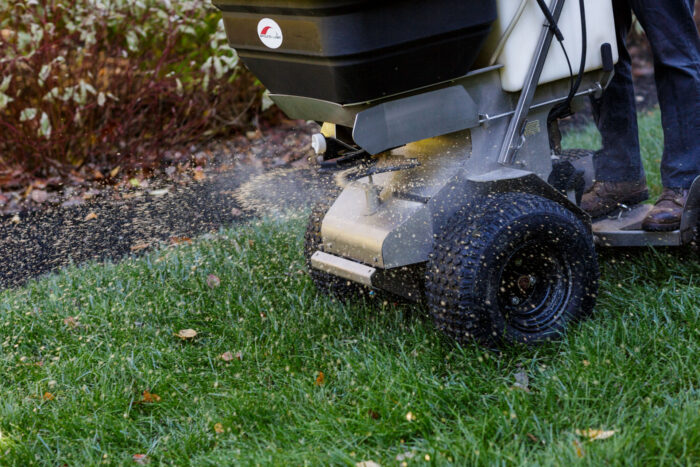Aeration and overseeding are two of the best services you can provide to rejuvenate your lawn. Once the process is complete, proper care is essential to ensure your new grass seedlings establish strong roots and fill in thin or bare areas. Here’s what you should know about caring for your lawn after aeration and overseeding.
Understanding Grass Seed Germination
 Grass seed doesn’t sprout overnight. Depending on the seed mix used, germination typically takes 7–21 days. Cool-season grasses like fescue, rye, and bluegrass will start to emerge within this period, but continued care is crucial to help the seedlings survive and thrive. Be patient—new growth may look uneven at first, but it will fill in as the seedlings mature.
Grass seed doesn’t sprout overnight. Depending on the seed mix used, germination typically takes 7–21 days. Cool-season grasses like fescue, rye, and bluegrass will start to emerge within this period, but continued care is crucial to help the seedlings survive and thrive. Be patient—new growth may look uneven at first, but it will fill in as the seedlings mature.
Watering Your New Seedlings
Moisture is the most important factor for germination. Follow these guidelines to ensure success:
- Light, frequent watering is best until seedlings establish. Water once or twice per day to keep the soil consistently damp (but not waterlogged).
- Avoid letting the seedbed dry out, as this can kill tender seedlings.
- After about three weeks, gradually transition to deeper, less frequent watering to encourage stronger root systems.
Fertilizing After Overseeding
 Fertilizer provides nutrients that support strong root development. If Natural Tree and Lawn Care applied a starter fertilizer during overseeding, your new seedlings already have what they need to get going. Continue with your recommended fertilization program to give the grass steady nutrition as it matures.
Fertilizer provides nutrients that support strong root development. If Natural Tree and Lawn Care applied a starter fertilizer during overseeding, your new seedlings already have what they need to get going. Continue with your recommended fertilization program to give the grass steady nutrition as it matures.
Hold Off on Weed Control
While it may be tempting to tackle weeds right away, avoid applying weed control products until your new grass has been mowed at least 3–4 times. Control products may harm new seedlings or cause slow establishment. Once your new lawn is better established, weed control can safely be added back into your lawn care program.
Mowing New Grass
Allow seedlings to grow to about 3–4 inches tall before mowing. Keep mower blades sharp and avoid cutting too short—taller grass provides shade for the soil and helps retain moisture.
Your newly aerated and overseeded lawn has the potential to become thicker, healthier, and more resilient. With the right care for your new grass seedlings—consistent watering, patience with germination, continued fertilization, and delaying weed control—you’ll set the stage for lasting success.
If you have questions or would like professional guidance, the team at Natural Tree and Lawn Care is here to help. Feel free to reach out to our team today at 781-297-3674 or email info@naturaltree.com. For additional lawn care articles, please check out our blog!
